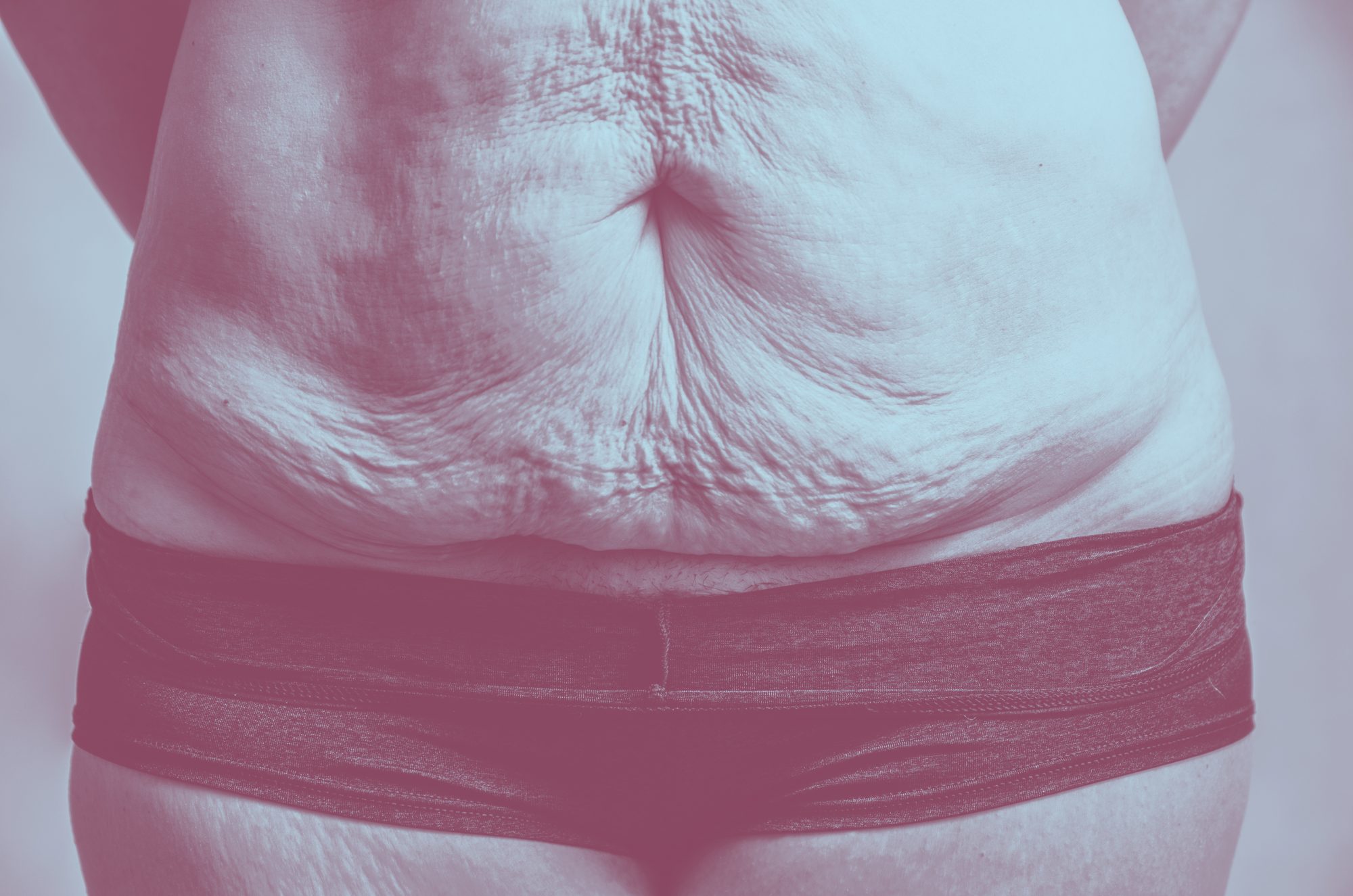…or both?

After pregnancy or weight loss, the abdominal muscle and skin does not simply “snap back.” We are very stretchy and elastic in nature, but a lot has to do with loose skin and muscle, including body type, genetics, and some things that are not yet determined.
Loose skin could hang on the belly area for months or even years after the belly area has changed. This can lead to a level of frustration for many, and there’s no magic potion to make it better.
The NIH has a recent list of various treatments available from dermatologists and aestheticians, including light, ultrasound, and heat therapies.
Also, overall skin care can impact how resilient the skin is. There are lots of creams declaring magic status, but the results may not be as apparent as with professional treatment.
Don’t forget that nutrition plays a vital role in skin health and overall healing. Antioxidants such dark colored berries and dark chocolate (think lots of rich color) as can play a big role in recovery of skin elasticity.
But what if it’s not just skin? What if it’s Diastasis Recti? And how do you know?
To see if the issue is Diastasis Recti, do the Diastasis Recti check on the Diastasis page. This is very telling, as far as where there is gap in the actual muscle, how the muscle is behaving, and how the skin is responding to the muscle.
Many people have both issues, but when the muscles come back together, the skin and other tissue appears more taut. Focusing on the Diastasis Recti can help your body heal in many ways, including pain in the back, pelvic floor problems, and other aesthetic problems that might bother you.